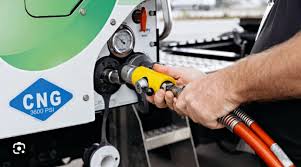Oil & Energy
‘Renewable Energy Waste Crisis Is Much Worse Than You Think’

Waste disposal is not a popular topic of discussion in the media when it comes to renewable energy. Most of the coverage that solar and wind power is getting is strongly positive, with a focus on falling costs and rising efficiencies, as well as government plans for huge increases in installed capacity. Yet problems tend to lurk and wait to spring up. Now, the waste problem is springing up.
TheInternational Renewable Energy Agency (IRENA) estimated in 2016 that unless we made significant changes to our treatment of solar panels, they could add up to 78 million tons of waste. The IRENA did not phrase it this way. It said that “recycling or repurposing solar PV panels at the end of their roughly 30-year lifetime can unlock an estimated stock of 78 million tonnes of raw materials and other valuable components globally by 2050.”
The thing is that most panels do not live to see their 30th birthday, as an article in the Harvard Business Review from June pointed out. Solar waste, it said, is growing much faster than it should have, theoretically. This is because another thing that you wouldn’t see widely publicised is solar panels beginto lose efficiency from the moment they are installed.
Meanwhile, new, more efficient panels are being developed. Even if the loss of efficiency is minuscule, at an average 0.5 percent, that figure is off the top of a typical efficiency rate of less than 30 percent (light-to-electricity conversion), so when offered a higher efficiency installation, many residential solar owners would consider it. The authors of the article, dubbed The Dark Side of Solar Power, point to the continuous improvements in solar panel technology as a reason for shorter actual lives for residential panels. They note that thanks to these improvements, both in cost and efficiency, consumers are a lot less likely to wait for their panels to turn 30 before they replace them. As a result, these early replacements could lead to 50 times more solar panel waste than IRENA had forecast.
It’s worth noting that IRENA’s forecast for the 78-million-ton opportunity from solar panel waste was made in 2016. A lot of things have changed over the past five years, including the rate of growth in solar panel installations. Unfortunately, what hasn’t changed a lot is the economics of recycling solar panels.
Grist reported recently that, according to researchers and recycling industry insiders, the cost of recycling a solar panel varies between $12 and $25. Meanwhile, the income from recovering certain elements from it comes in at about $3. According to the National Renewable Energy Laboratory, recycling a solar panel costs between $20 and $30, while sending it to a landfill costs $1-2. And while the EU has put in place recycling mandates, the U.S. has no such mandates on a national level.
This massive difference in the cost of recycling versus the cost of dumping panels at landfills hints at an unpleasant truth that we are seeing in the EU already. There are recycling mandates there. The countries with the highest solar capacity pay the most for their electricity. This could, of course, be a coincidence, but that’s quite unlikely: recycling costs money, and somebody has to foot that bill.
It is this bill that busts the myth of the cheap solar power that can fuel the whole world because the sun is there and shines for free. This is true. But once you add the costs of recycling to the total cost of solar energy, as the Harvard Business Review authors note, the cost of solar jumps four times.
The future, in the absence of quick action, looks bleak, according to the researchers who penned the HBR article.
“If we plot future installations according to a logistic growth curve capped at 700 GW by 2050 (NREL’s estimated ceiling for the U.S. residential market) alongside the early replacement curve, we see the volume of waste surpassing that of new installations by the year 2031,” Atalay Atasu, Serasu Duran, and Luk N. Van Wassenhove wrote.
“By 2035, discarded panels would outweigh new units sold by 2.56 times. In turn, this would catapult the LCOE (levelised cost of energy, a measure of the overall cost of an energy-producing asset over its lifetime) to four times the current projection. The economics of solar so bright-seeming from the vantage point of 2021 would darken quickly as the industry sinks under the weight of its own trash.”
This sounds bad enough. It’s even worse because there are only a handful of companies in the U.S. that recycle solar panels. But there is also wind turbine blade waste that is building up, and while, unlike solar panels, it does not contain toxic materials, the sheer size of the blades makes it a significant waste problem. Wind turbine blades are not recyclable yet, and tons of them are coming to landfills over the next 20 years; more than 720,000 tons in the U.S. alone.
“Because there are so few options for recycling wind turbine blades currently, the vast majority of those that are no longer able to be used are either stored in various places or taken to landfill,” says CEO, and co-founder of CruxOCM, Vicki Knott.
“While the waste stream represents only a tiny portion of municipal solid waste, it’s clearly not an ideal scenario. As wind turbines are being replaced, there’s certainly a need for more creative recycling solutions for used blades,” Knott also said.
It all sounds like a waste nightmare scenario, and it pretty much is.
While many residential solar panels will live out their lives, many others will not. But this is only the beginning of the problem. Recycling costs must be brought down and capacity built before the current wave of utility-scale solar farm additions subsides because anything done later would be playing catch-up with little chance to win.
Slav writes for Oilprice.com
By: Irina Slav
Oil & Energy
NSCDC’s Anti-Vandal Squad Uncovers Artisanal Refinery In Rivers Community

The Anti-Vandal Squad of the Nigeria Security and Civil Defence Corps (NSCDC), Rivers State Command, has uncovered yet another local refinery situated at Adobi-Akwa settlement in Etche Local Government Area of Rivers State.
The State Commandant, Basil Igwebueze, disclosed this while speaking to journalists shortly after the tour of the Illegal site.
Represented by the Head, Anti-Vandal Squad, CSC Peters Ibiso, Igwebueze said the squad made the discovery following a tipp off, expressing regret that no arrest was made as the boys fled the site upon sighting the squad.
The cammandant’s representative took the newsmen across a tick forest of about 6-7 kilometers from the main town.
The team sighted where the pipeline vandals tapped into the Well Head of yet to be ascertained multinational company, connected their galvanised pipes to several cooking pots, heat up the crude to produce Automotive Gas Oil (AGO).
In his words, “Upon receiving a tip-off, the Anti-Vandal operatives swung into action to uncover this illegal oil bunkering site. They were in this forest for two days having cordoned the area, unfortunately, the perpetrators upon sighting our men took to their heels, but investigation is still ongoing to effect the arrests of such defiant elements”.
The Anti-Vandal Unit Head further narrated the operation techniques of the operators of local illegal refineries from the point of extraction of crude through vandalism of oil pipelines to cooking in various ovens where the content is subjected to high temperature and transmitted through pipes to reservoirs for storage and onward trans- loading to buyers.
While insisting that the command would not relent in the fight against illegal dealings in petroleum products, he urged the public to have more trust in the NSCDC by providing actionable intelligence that would enhance possible arrest of economic saboteurs in the State.
“Our commitment to continuously work in tandem with the prosecutorial mandate of the corps in order to rid the State of economic saboteurs remains unchanged. We value our informants and most especially the intelligence driven tip-off received from time to time.
“It is also our duty to ensure that our source of information are not disclosed so as to protect our informants. It is therefore our delight that the public will continue to have confidence and trust in us as we together protect the nation’s critical national assets and infrastructure from dare devil vandals”, he stated.
By: Lady Godknows Ogbulu
Oil & Energy
Oil Fund Withdrawals Suggest Extended Price Rally

The world’s largest crude oil exchange-traded fund has bled over $2 billion in less than a year. And it i
s not due to investors finding greener pastures elsewhere with other ETFs; it is the siren call of soaring prices that is prompting this mass exodus.
The WisdomTree Brent Crude Oil exchange-traded commodity had assets under management of some $2.5 billion last summer, according to Bloomberg. Now, the publication reports, this is down to $396 million, with withdrawals accelerating over the past few days.
In that, withdrawals seem to be following price trends. Brent earlier this month topped $90 per barrel and, after a short pause earlier this week, is back above that threshold again following the latest Israeli strike on the Gaza Strip amid reports about a possible ceasefire.
While it is true that prices are currently driven higher mainly by geopolitical events, fundamentals are also at play. A growing number of forecasters are updating their predictions for benchmarks this year on expectations of resilient demand and increasingly tighter supply. And investors are following the trend.
Even those who have not sold their ETF holdings in order to invest more directly in the rally are benefitting. That same WisdomTree Brent Crude Oil ETC generated returns of over 13 percent during the first quarter of the year as opposed to an average 8.8% gain in the S&P 500.
The WisdomTree exchange-traded commodity became the world’s largest oil fund at the beginning of last year. The fund saw inflows of over $1 billion, which poured in as the deflation in oil prices that had begun in late 2022 extended into the new year. Now, the trend has reversed and it has reversed strongly.
The WisdomTree Brent Crude Oil ETC is not the only fund seeing outflows. The U.S. Oil Fund, which used to be the world’s biggest oil fund before the WisdomTree inflows last year and is now the world’s biggest oil fund once again, also saw a flurry of investor exits as benchmarks climbed higher.
According to Bloomberg, the fund’s assets under management currently stand at $1.3 billion, down from some $5 billion during the pandemic.
In further evidence that oil makes money, the Middle East is about to become the only region in the world with three trillion-dollar sovereign wealth funds. The Abu Dhabi Investment Authority is worth $993 billion, Bloomberg reported in March, while the Saudi Public Investment Fund and the Kuwait Investment Authority are breathing down its neck.
Meanwhile, investment in transition-related stocks is on the decline, according to data reported by Reuters. The S&P Global Clean Energy Index is down by 10% since the start of the year. In comparison, the S&P 500 Energy Index, which comprises Big Oil names, has gained 16.3%.
The data shows that investors are growing wary of all the promises made by transition advocates as evidence mounts that these were not based on due diligence. Wind and solar stocks suffered a crash last year when this first became clear.
Now, we are witnessing a continued awakening among investors to the challenges and the realistic potential of transition technology and alternative energy sources.
“With conventional energy having its own bull run, I think the alternative funds will struggle for the foreseeable future, and we shall see what the election brings”, the Managing Director of capital markets at Phoenix Capital Group Holdings told Reuters.
The comment summarizes the challenging situation for alternative energy investment and highlights the rebound of interest in oil and gas, much to the chagrin of decision-makers on both sides of the Atlantic.
In both Europe and the U.S., things can get even worse for the transition after the respective elections—in June for European Parliament and in November for U.S. President. It will certainly be an interesting year in energy.
Slav writes for oilprice.
By: Irina Slav
Oil & Energy
CNG Initiative: FG Targets 25,000 Jobs, $2.5bn Investment

The Programme Director and Chief Executive, Presidential Compressed Natural Gas Initiatives, Michael Oluwagbemi, has announced the Federal Government’s plan to target over 25,000 jobs and $2.5 billion worth of investment by 2027.
Oluwagbemi made this known during the Presidential CNG stakeholders’ engagement workshop held at BOVAS Auto-Gas Filling Stations, Ajibode Bus-Stop, in Ibadan, Oyo State capital, at the weekend.
He stated that the initiative, which was part of palliative measures to ease the burden of the removal of fuel subsidy, would attract enormous investment and job creation as well as impact positively on the lives of Nigerians.
Meanwhile, he called on Nigerians to embrace the new initiatives by the Federal Government as part of palliatives to cushion the effect of the removal of fuel subsidy in the country.
“On October 1, 2023, when the President gave his speech, he announced that the Presidential CNG initiatives are going to be rolled out as part of palliatives on the removal of fuel subsidy.
“One of our major concerns is to make sure that the transition for the transportation sector is a cheaper, safer, and more reliable source of energy.
“In the coming weeks, we are going to be announcing the conversion incentives programme which will enable Nigerians currently using PMS and Diesel fuel vehicles to be able to convert their vehicles at designated places across the country at a discounted price based on certain pre-qualification under the palliative programme of the Federal Government”, he said.
On the value chain of the initiative, Oluwagbemi explained that the Federal Ministry of Finance is acquiring tricycles and buses that would be assembled and manufactured in Nigeria, with more than five automobile firms being activated.
“The value chain of the programme starts with every one of us. From the point of converting your vehicle, you have created the demand for natural gas.
“If your vehicle is converted by technicians and refuelled by autogas workshops across the country, then you are creating jobs for civil engineers and technicians. You’re creating jobs for the upstream in terms of upstream activities associated with oil and gas.
“And in line with the programme, the Federal Ministry of Finance is acquiring a number of tricycles and buses that will be assembled and manufactured in Nigeria. More than five of our automobile firms have been activated. So, you can see that in terms of job creation, the opportunities for Nigerians are enormous.
“The President has said we need to convert one million vehicles by 2027. We need 1,000 conversion shops and we need over 3,000 filing stations just like this. You can imagine the level of investment required for this.
“In order to sustain one million vehicle conversions by 2027, we need 25,000 technicians. So, the job creation potential is an opportunity for job creation in addition to our gross domestic product, $2.5 billion worth of investment to be mobilised in the next four years and of course more than $25 billion added to our GDP”, he said.
Oluwagbemi further called on Nigerians to embrace the new initiatives by the Federal Government as part of palliatives to cushion the effect of the removal of fuel subsidy in the country.
The representative of BOVAS Filling Station, a private investor in the Presidential CNG Initiatives, Temitope Samson, said, “We have worked with the regulators, we are also working with the Presidential Initiatives on CNG to make sure that standard safety is adhered to. We have also worked with the Standard Organisation of Nigeria to ensure that we have a standard accepted internationally.
“Our role is to ensure that there is availability of CNG across the nation, and to also ensure we have enough kits and tanks that are converted for people to use as many as possible, and to ensure safety and to train others so that anywhere they get to, they have very safe conversion”.
Recall that last year, President Bola Tinubu approved the Presidential Compressed Natural Gas initiative(PCNG-i)
This initiative aims to not only introduce more than 11,500 new CNG-enabled vehicles and provide 55,000 CNG conversion kits for existing vehicles that depend on Premium Motor Spirit but also promote local manufacturing, assembly, and job creation.
-
Opinion2 days ago
Agriculture: Solution To Hunger, Inflation, Food Insecurity
-
News2 days ago
Pan-Igbo Group Hails Dangote Group For Reducing Diesel Price
-
Sports2 days ago
Minister Renews Hope For Sports Dev, Signs MoU
-

 Rivers2 days ago
Rivers2 days agoBayelsa LG Polls: BYSIEC Issues Return Certificates To Chairmen, Others
-

 Maritime2 days ago
Maritime2 days agoNPA Secures $700m Citibank Loan For Tin Can, Apapa Ports Rehabilitation
-

 News2 days ago
News2 days agoJAMB Sanctions Officials For Asking Candidate To Remove Hijab
-

 Opinion2 days ago
Opinion2 days agoCautious Optimism As Naira Rebounds
-
News2 days ago
Waive Tax On Electronic Imports, Women Engineers Appeal To Tinubu

